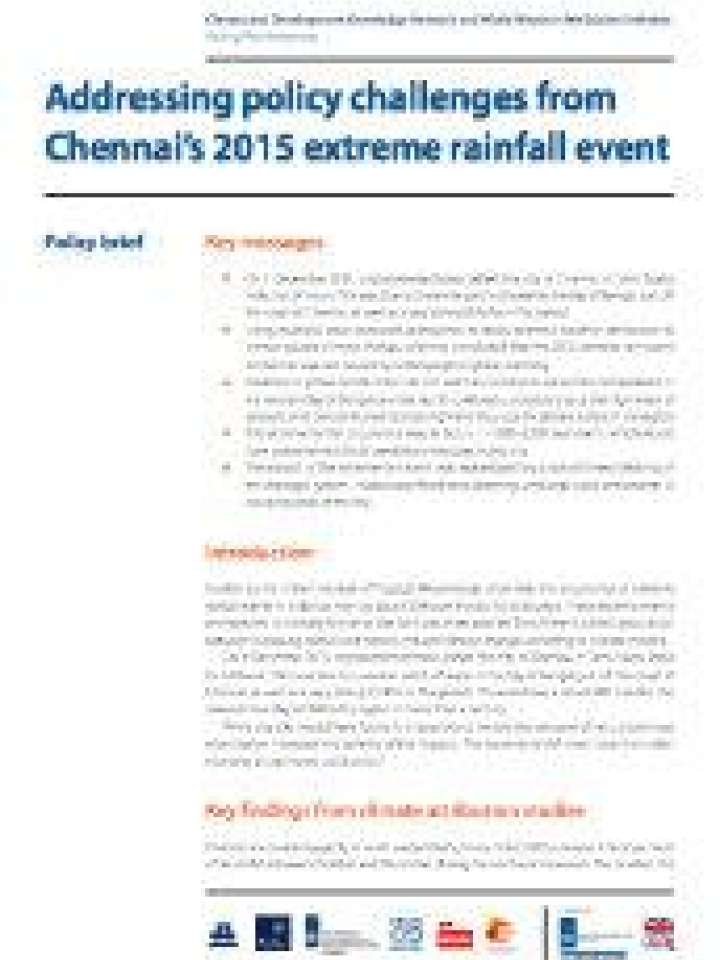Addressing policy challenges from Chennai’s 2015 extreme rainfall event
This policy brief, from the CDKN Raising Risk Awareness initiative, identifies the key causes of Chennai’s 2015 extreme rainfall and gives a number of recommendations for building urban resilience in the area.
Key messages
- Using multiple, peer-reviewed approaches to study extreme weather attribution to human-caused climate change, scientists concluded that the 2015 extreme rain event in Chennai was not caused by anthropogenic global warming.
- Contrary to global trends, there has not been an increase in sea surface temperature in the western Bay of Bengal over the last 35 to 40 years, probably due to the high levels of aerosols, or air pollutants, that block sunlight and thus cool the globe’s surface in the region.
- The extreme rainfall occurrence was, in fact, a 1 in 600–2,500 year event, which would have overwhelmed flood prevention measures in any city.
- The impact of the extreme rain event was exacerbated by a lack of timely desilting of the drainage system, inadequate flood-zone planning, and large-scale settlements in low-lying areas of the city.
Explore further

